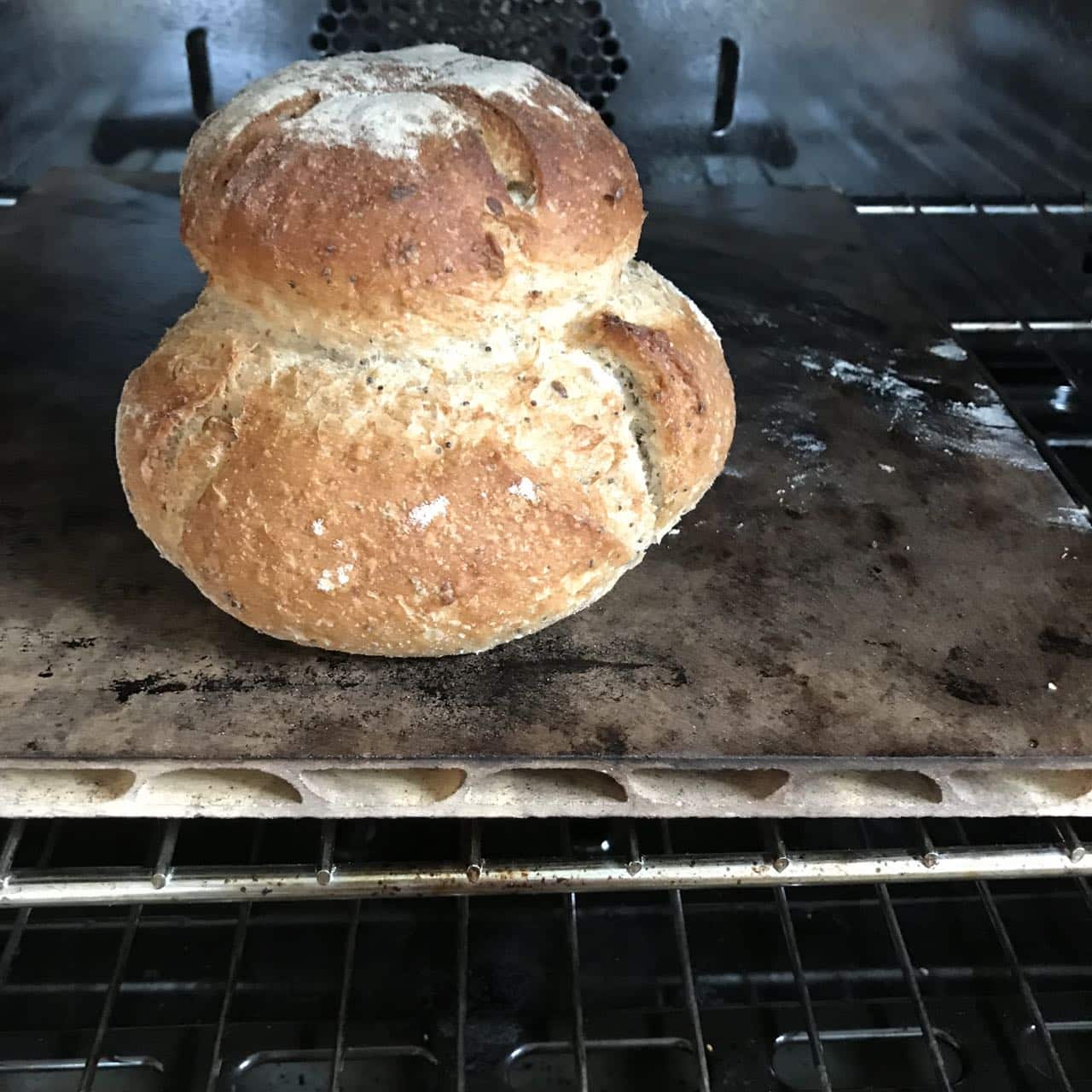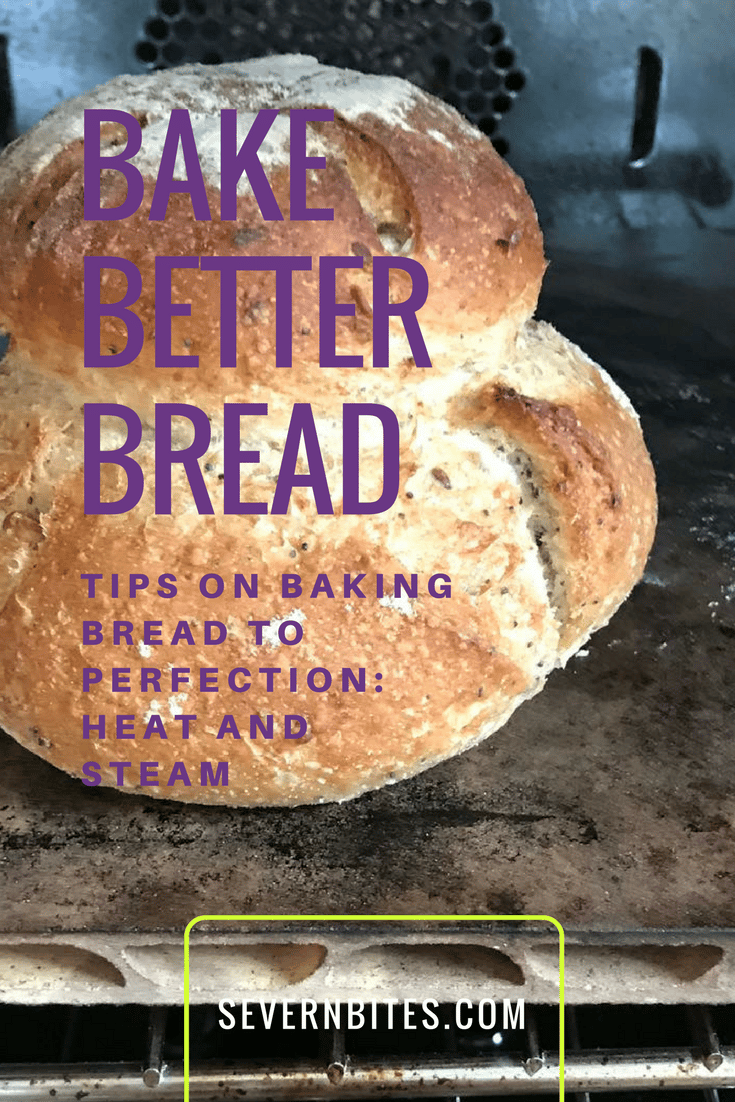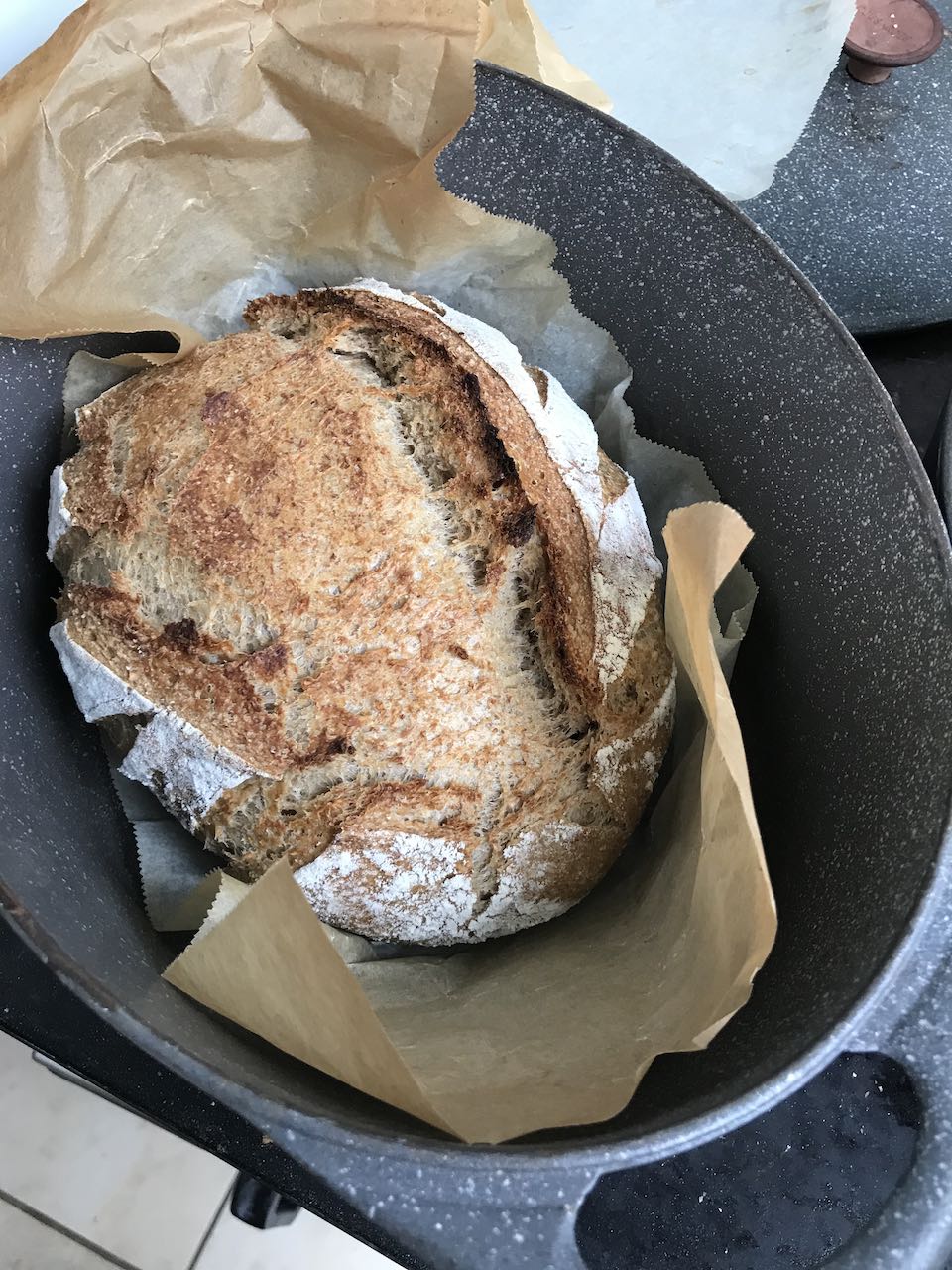How using heat and steam improves your bread
You’ve taken time over your bread dough but when it’s baked, it’s not quite as you hoped. Let me share some bread baking tips on heat and steam. Follow these and you’ll see an improvement in your bread!
Heat
Domestic ovens are not designed to bake bread. You might remember back to domestic science/cookery lessons at school when you were told not to open the door of your oven once the cake was inside. This is because as soon as you do so, the temperature will go down very quickly. You want a consistent temperature for your bread too.

Commercial bread ovens can bake 260°C (500°F) or higher – not generally achievable with a domestic oven. Most have a stone floor that retains and distributes the heat.
Don’t rely on the dial on your cooker. It’s a great idea to check what temperature your domestic oven actually reaches, you might be surprised. An oven thermometer is a useful tool for example Amazon.
If you have the option, turn off the fan, it will work better without and add steam (see below). If you can, aim to bake your bread at 230°C (450°F).
If you’re baking regularly, you might consider upgrading to a Rofco oven. This baking oven is a similar size to a washing machine and can bake up to 12 loaves.
Use a cast iron casserole dish or dutch oven
This will transform your bread! Introducing a method of retaining the heat and maintaining a constant temperature will also improve the crust and bottom of your loaf.
Baking your bread in a pre-heated cast iron dish gives excellent results. I’ve been experimenting with 3 different sizes I happen to have.
In America, the Dutch oven is popular. This cast iron dish has no top handle so you use the lid as the base and place the pot upside down on the lid with the bread inside.
However, if you’re in the UK or Europe, you are more likely to have a cast iron casserole dish. It’s just as easy to use.
Do not be tempted to place a really large loaf in the pan. I have found that 650 to 750 gram loaves fit beautifully in a 23 cm round or 30 cm x 23 cm wide pan.
Simply place your loaf on some baking parchment, score it and lower it into the pre-heated pan and leave it there to bake. After 25 minutes, remove the lid and let it bake for 10 further minutes. Then take the bread out of the dish and bake a further 5 minutes to ensure it is evenly baked around the sides.

Use a baking stone
Whilst using the method above gives great results, it is not ideal if you want to bake more than one loaf at a time or bake other yeasted items. It’s well worth acquiring a baking ‘stone’. Ideally, this should fit the entire shelf in your oven – whilst round pizza stones are fine, they will limit your options.

A baking stone will cost from around £18 for 30 x 30 cm. I have had great results using a granite tile purchased from B&Q (you can often buy them singly in store) and a fireclay plate from Pepita which handily is available in a larger size if you have a range cooker. Other varieties are available.
The key is pre-heating. Set your oven to the desired temperature and put your stone in for at least an hour before you bake.
Steam
Allow your bread to rise beautifully. When you add steam when baking, it gives the bread a chance to expand and heat to penetrate the interior – often called oven spring. Most large commercial bread ovens are fitted with steam injection operated by button. To make a great crust, you want replicate this button and introduce steam into your domestic oven. Adding a pan of water is one method. This works fairly well and is most the suitable method for gas ovens. After experimenting, I discovered that putting the tray of water above the bread rather than below gives better results.
You can add steam in an electric oven by simply spraying water in using a spray bottle you might use on plants. A few short blasts can make all the difference. Spray your stone before the bread goes in then just spray liberally after you’ve put the bread on the stone.
Of course, you should be very careful when carrying out these moves.
I bake my bread for 35 minutes at 450°F (230°C)
Scoring
Just a brief mention here of scoring your loaf. This is done just before you bake the dough using a sharp serrated knife or a lame (a sharp blade). This enables the loaf to expand and rise well. It expands where you want it to. Left to itself, it might break in a different place.
Check out my other tips on How to Bake Better Bread

Book a breadmaking class
I run a range of breadmaking classes, there will be one to tempt you. Check out some of the other Bake Better Bread posts:
Baker Better Bread: Baking in the Rofco


Yes. I’d freeze once baked rather than before baking. Then reheat before serving
Good to hear you’ve found a good option. If you put your bread on baking parchment and lower it into the dutch oven you won’t get burnt
I get burned using dutch ovens. I got tired of adding steam to ovens. So what’s worked for me is to use a baking stone and cover it with a thick stainless steal bowl for the first 15 minutes or so. Don’t even need to preheat it.